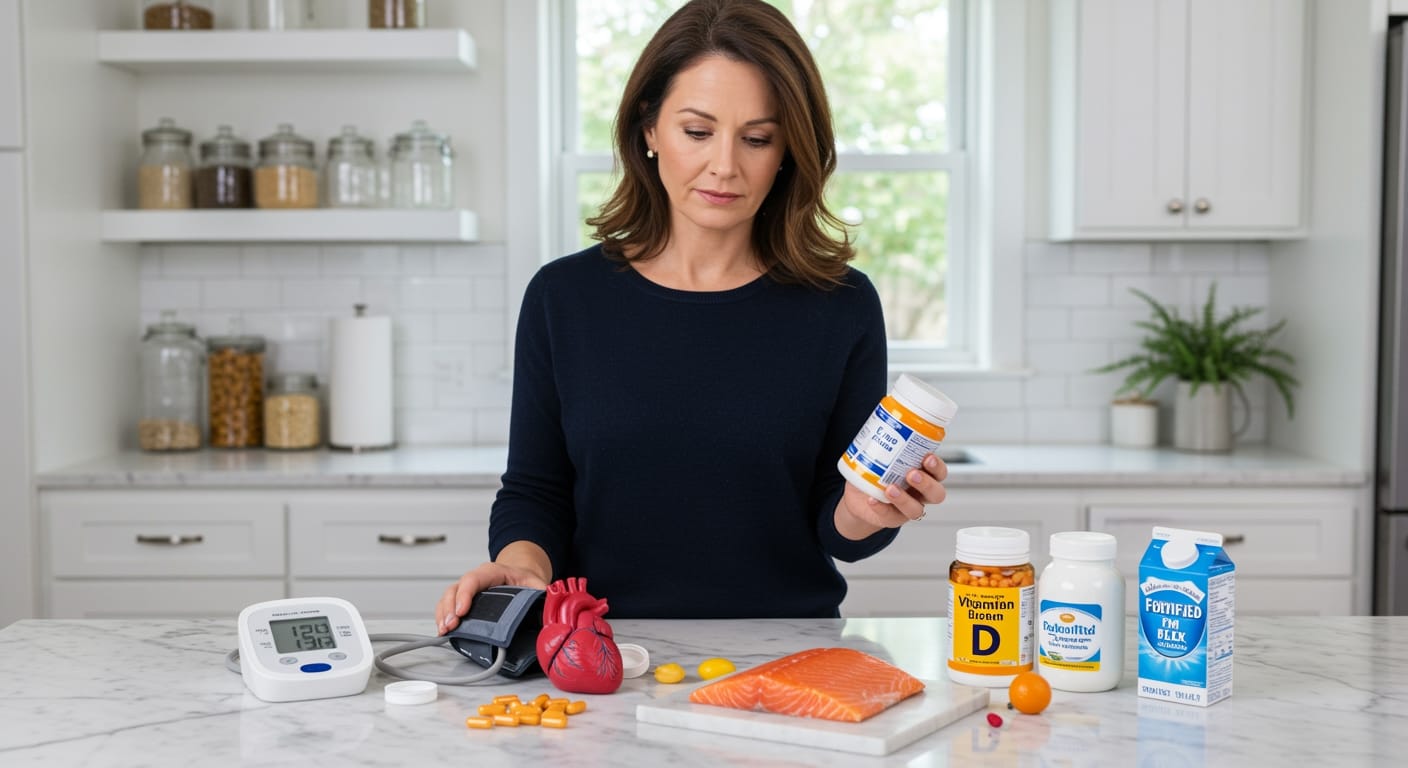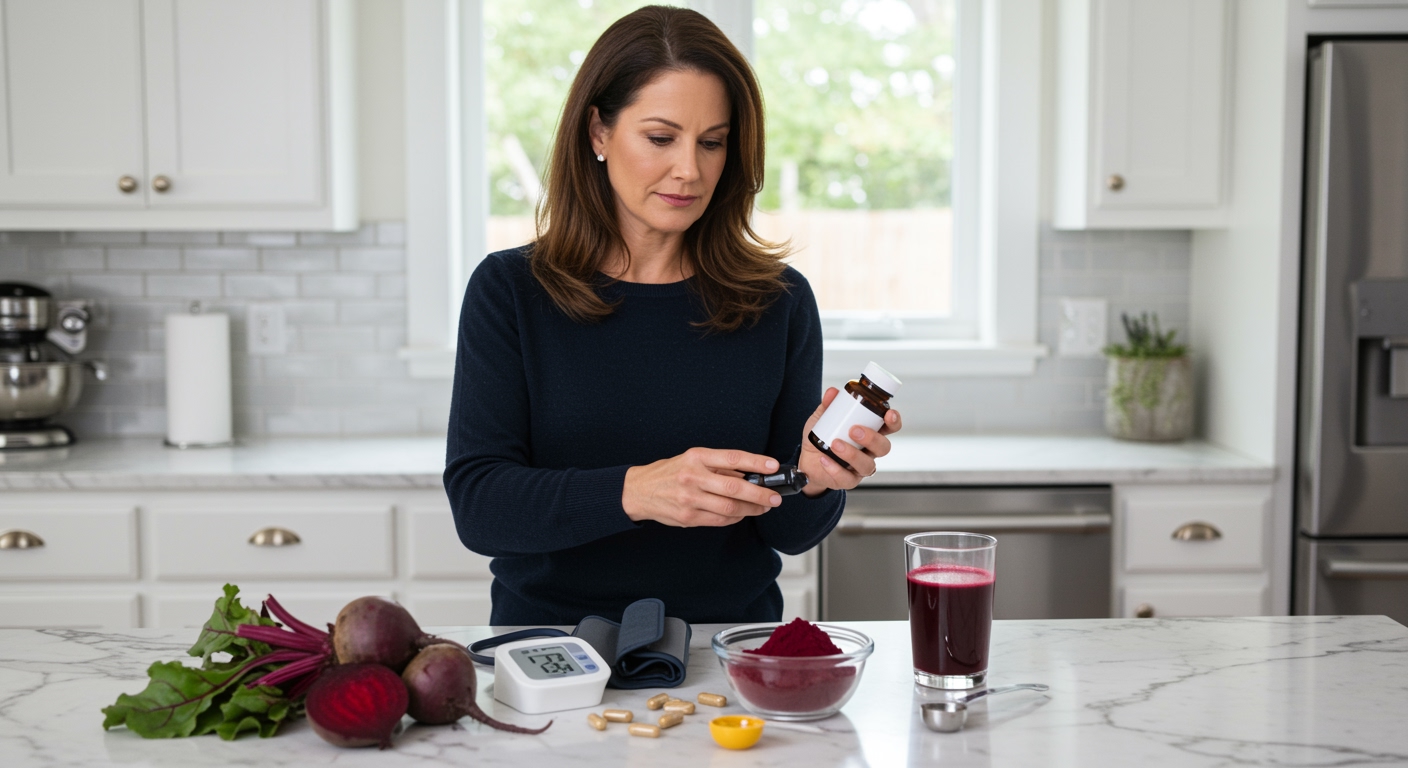✪ Key Takeaway: Vitamin D deficiency may contribute to high blood pressure through multiple mechanisms affecting blood vessel function and hormone regulation.
Introduction
Your doctor checks your blood pressure at every visit but rarely mentions your vitamin D levels.
You might be wondering about this connection because you have high blood pressure and recently discovered your vitamin D is low, or perhaps you spend most of your time indoors and worry about your heart health.
Hi, I’m Abdur, your nutrition coach and today I’m going to explain the complex relationship between vitamin D deficiency and high blood pressure, including what happens in your body and what you can do about it.
How Does Vitamin D Affect Blood Pressure?
Vitamin D works like a hormone in your body rather than just a simple vitamin.
When you have adequate vitamin D levels, it helps regulate the renin-angiotensin system, which controls blood pressure through your kidneys.
This system produces a hormone called renin that eventually leads to the formation of angiotensin II, a powerful blood vessel constrictor.
Vitamin D helps suppress renin production, which means less angiotensin II formation and more relaxed blood vessels.
When vitamin D levels drop too low, your renin-angiotensin system becomes overactive, causing blood vessels to constrict and blood pressure to rise.
Research shows that people with vitamin D deficiency have significantly higher rates of hypertension compared to those with adequate levels.
✪ Fact: Vitamin D receptors are found in nearly every cell of your cardiovascular system, including heart muscle and blood vessel walls.
What Happens to Your Blood Vessels Without Enough Vitamin D?
Your blood vessels need vitamin D to maintain their flexibility and proper function.
Without adequate vitamin D, the smooth muscle cells in your blood vessel walls become more reactive to constricting signals.
This happens because vitamin D deficiency increases the production of inflammatory markers that damage the inner lining of blood vessels called the endothelium.
The damaged endothelium cannot produce enough nitric oxide, a molecule that helps blood vessels relax and stay wide.
At the cellular level, vitamin D deficiency also affects calcium handling in smooth muscle cells, making them more likely to contract and stay contracted.
This combination of increased inflammation, reduced nitric oxide, and altered calcium handling creates the perfect storm for elevated blood pressure.
✪ Pro Tip: Getting your vitamin D level tested is more important than guessing your status based on sun exposure alone.
Can Vitamin D Supplements Lower Blood Pressure?
The research on vitamin D supplementation for blood pressure shows mixed results depending on several factors.
Studies indicate that vitamin D supplements work best for people who are truly deficient (blood levels below 20 ng/mL or 50 nmol/L).
If your vitamin D levels are already adequate, taking more supplements typically does not provide additional blood pressure benefits.
The most effective approach involves taking vitamin D3 (cholecalciferol) rather than D2, as your body converts D3 more efficiently into the active hormone form.
Clinical trials show that correcting vitamin D deficiency can reduce systolic blood pressure by 2-6 mmHg and diastolic pressure by 1-3 mmHg.
While these reductions might seem small, they can translate to meaningful cardiovascular risk reduction at the population level.
However, vitamin D supplementation works slowly, often taking 3-6 months to show measurable effects on blood pressure.
✪ Note: Vitamin D supplements should complement, not replace, proven blood pressure treatments like medication and lifestyle changes.
How Much Vitamin D Do You Need for Heart Health?
Most health experts recommend maintaining blood vitamin D levels between 30-50 ng/mL (75-125 nmol/L) for optimal cardiovascular health.
To achieve these levels, many people need 1000-4000 IU of vitamin D3 daily, but the exact amount depends on your current blood levels, body weight, and absorption capacity.
Your skin produces vitamin D when exposed to UVB radiation, but factors like skin color, age, geographic location, and season affect this natural production.
Food sources include fatty fish like salmon and mackerel, fortified dairy products, and egg yolks, but most people cannot get enough vitamin D from food alone.
The safest approach involves getting your blood tested first, then working with a healthcare provider to determine the right supplementation strategy.
Taking too much vitamin D can cause calcium buildup in arteries, which actually increases cardiovascular risk rather than reducing it.
✪ Pro Tip: Take vitamin D supplements with a meal containing healthy fats to maximize absorption in your digestive system.
The Bottom Line
Vitamin D deficiency can contribute to high blood pressure through multiple pathways affecting your cardiovascular system, but it is rarely the sole cause of hypertension.
“Think of vitamin D as one important piece of your blood pressure puzzle, not the magic solution that fixes everything.”
I would love to hear about your experience with vitamin D and blood pressure management, so please share your questions, thoughts, or personal stories in the comments below.
References
At NutritionCrown, we use quality and credible sources to ensure our content is accurate and trustworthy. Below are the sources referenced in creating this article:
- American Heart Association: Vitamin D Deficiency and Risk of Cardiovascular Disease
- National Center for Biotechnology Information: Vitamin D and Cardiovascular Disease
- American Heart Association: Vitamin D and Blood Pressure
- Centers for Disease Control and Prevention: Vitamin D Status and Hypertension
- Mayo Clinic: Vitamin D Deficiency and High Blood Pressure





